Media
Culture
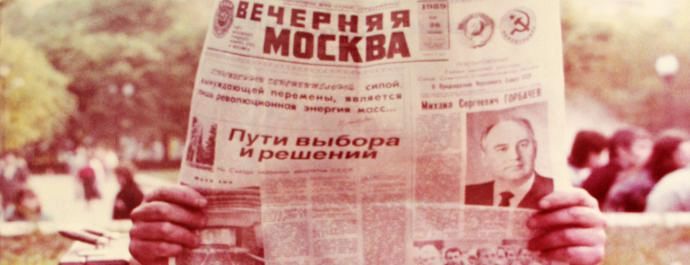
Throughout the 20th century, the media played a fundamental role in the Soviet propaganda system, which Lenin had already theorized. Under statecontrol, whether through the intermediary of broadcast channels or through orders of paper for the print media, the media were supervised by members of the Communist Party who occupied such prestigious positions as director of television (Gostelradio) or of the official newspaper, Pravda. Censorship played a crucial role, both in controlling the flux ofinformation coming from foreign countries as well as in scrambling foreignradio frequencies. The Soviet population, and more generally the population of the entire Communist bloc, received programming that wasessentially cultural – and very rarely “live” –glorifying theCommunist Party. The media’s role was not only informative, it also had to reproduce and encourage the Eastern bloc social model. In response to this censorship, foreign radios like Radio Free Europe and Radio Liberty endeavored throughout the Cold War to break through the Censorship Curtain by broadcasting from West Germany in the Eastern Bloc countries’ national languages. Nevertheless, the media in the USSR did not evolve solely thanks to external pressure. Technical modernizationand popular demand – as well as choices made by journalists during theperiod of glasnost and perestroika (which was a time of lesser censorship rather than one of complete freedom of information) during the Gorbachev years – also had a significant influence. From 1989 on, local radiostations and “regional” television channels offered a more independent source of information.
Archive
Propaganda poster denouncing foreign radios
Dating from 1977, this propaganda poster denounces the siren calls of western-bloc radios, especially Radio Liberty and Radio Free Europe, whose “lies” were aimed at the Communist bloc
country: Soviet Union / year:
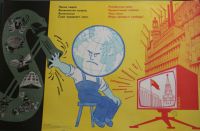
Dating from 1977, this propaganda poster denounces the siren calls of western-bloc radios, especially Radio Liberty and Radio Free Europe, whose “lies” were aimed at the Communist bloc: behind the West’s much-ballyhooed values of democracy, civil rights and freedom, hid the reign of King Dollar, segregation, bourgeois capitalism and the CIA, which manipulated fascist puppet dictators. On the other hand, the Second International could only be reassured by the voice of the Kremlin: as broadcast on television, it reminded everyone that the Communist bloc promised “safety,” solidarity, truth and freedom, as well as social progress in an industrialized world, represented in a manner reminiscentof classical 20th-century Soviet propaganda aesthetics.
Report from Radio Free Europe
Radio Free Europe was Eastern censors’ pet peeve.
country: German Democratic Republic / year:
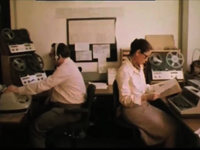
Radio Free Europe was Eastern censors’ pet peeve. Based in Munich, it broadcast towards Eastern Europe and Russia in a range of languages from the 1950s on. What kind of information? Anything the state media tried to conceal, as well as any significant political, economic and social information that could help lead to political transformation, economic liberalization and reinforcement of civil society in the Eastern-bloc countries. It also provided a mouthpiece for key emigrants and defectors, etc. Initially a private radio, the organism came to be financed by the American Congress (the CIA stopped financing it in 1971). In 1976 it merged with Radio Liberty, another organization which broadcast towards the Soviet Union? U.S. President Jimmy Carter’s National Security Adviser, Zbigniew Brzezinski, increased RFE. RL’s signal strength. In 1981, an attack attributed to the terrorist Carlos following orders from Ceausescu destroyed parts of the Munich installations. Soviet authorities would try to scramble the radio’s frequency until 1988, when Gorbachev began to work hand in hand with RFE.
Creating information in the satellite republic of Uzbekistan.
Although they were very far from Moscow, some Soviet Republics still got daily programming in Russian: the first channel for example, broadcast five times a day in order to cover eleven time zones.
country: Soviet Union / year:
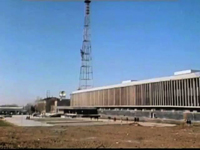
Although they were very far from Moscow, some Soviet Republics still got daily programming in Russian: the first channel for example, broadcast five times a day in order to cover eleven time zones. The second channel’s 15 hours of daily programming in Russian reached 80% of the territory. Southern and eastern populations could get the news program “Vremia” (“Time”) through these channels. More regional programs were also broadcast either by the fourth channel, which emitted 2 to 6 hours of programming daily in 45 languages, or by local channels such as Uzbek television. Even those channels’ news was provided and monitored by the official press agency Tass, which was controlled in turn by the regime.
The entertainment program: “Your Turn, Girls.”
During the 1970s and 80s, Soviet television programs aimed at a broader family circle, with programs targeted at different audiences, depending on age or gender, in this case young women.
country: Soviet Union / year:
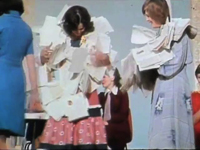
During the 1970s and 80s, Soviet television programs aimed at a broader family circle, with programs targeted at different audiences, depending on age or gender, in this case young women. This variety show demonstrates a surprising mix of Russian culture (references to literature and classical music), Soviet egalitarianism (the candidates are all workers, there are no prize winnings at the end) as well as a bourgeois ideal, as the young women are expected to be able to recite poetry, dance and to “carry themselves well.” The fact that interaction with the public is filmed, too, in the manner of shows from the West, demonstrates the program’s modernity.
The official news program of Polish television.
In December 1981, General Jaruselski, who had been head of the Polishgovernment for less than a year, imposed a state of siege to counter the growing demands of the population and of the Solidarnosc trade union, led by Lech Walesa.
country: People's Republic of Poland / year:
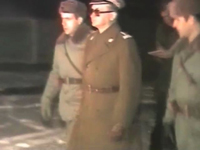
In December 1981, General Jaruselski, who had been head of the Polishgovernment for less than a year, imposed a state of siege to counter the growing demands of the population and of the Solidarnosc trade union, led by Lech Walesa. Polish television’s news programming was an exact replica of the military regime: broadcasting images of General Jaruselski, alternating the newscaster’s monologues with filmed documents, occasionally showing documentary reports and even more rarely broadcasting live – i.e. sticking carefully to the “Vremia” model. In this excerpt, General Jaruselski inspects soldiers in a regiment, praising the presence of a miner, the symbol of the working class under Communism.
General Jaruselski gives a press conference in Poland, in the early 1980s.
During the state of siege in Poland, General Jaruselski organized weekly press conferences which were then commented upon by journalist Jerzy Urban, the government spokesman, for the sake of both Polish television and foreign journalists.
country: People's Republic of Poland / year:
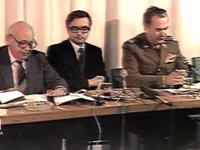
During the state of siege in Poland, General Jaruselski organized weekly press conferences which were then commented upon by journalist Jerzy Urban, the government spokesman, for the sake of both Polish television and foreign journalists. These conferences offered a platform for poking fun at the news transmitted by foreign media, such as the military repression of dissidents being discussed here. It was easy for Jerzy Urban to ridicule the BBC and Radio Canada for using terms like fascism and concentration camps, which were heavy with meaning in Polish Second World War history.